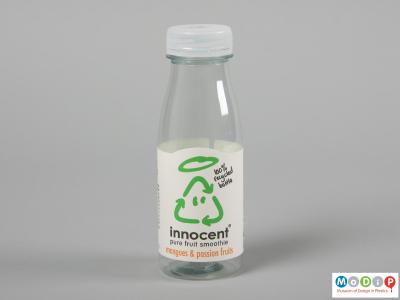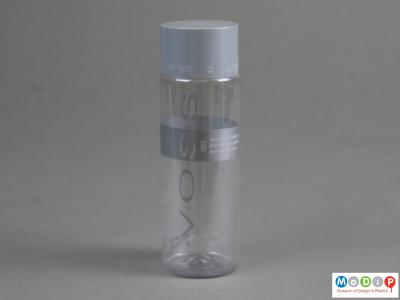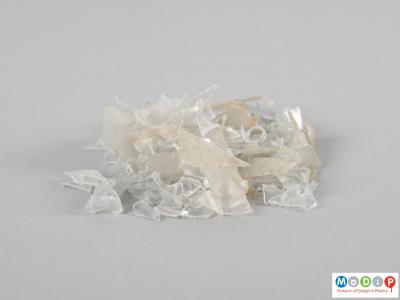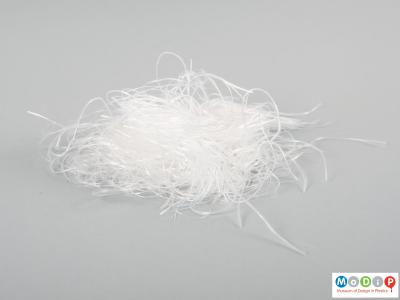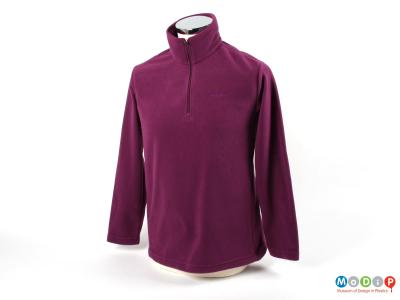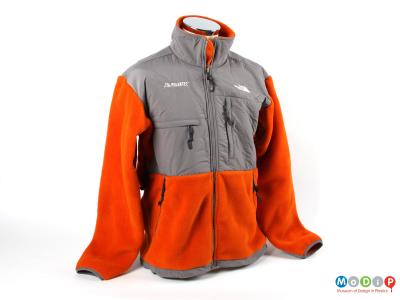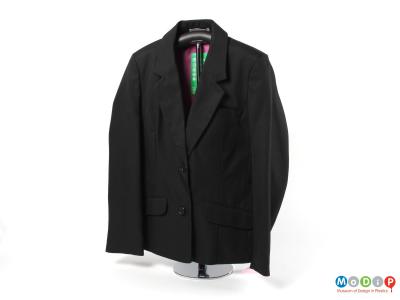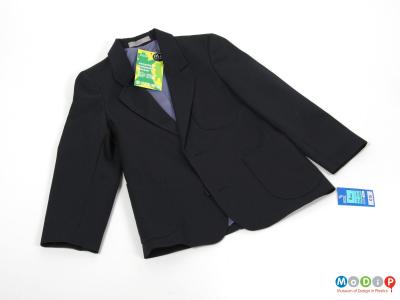All of the garments in this case are made using recycled polyethylene terephthalate (PET) bottles (1 - 2). The bottles are first flaked (3), the flakes are then melted and the molten material is forced through a nozzle called a spinneret, to form filaments (4). The long filaments are then twisted together to make the yarn which is processed into fabric.
Fleeces (5) are a common garment made of recycled material. The North Face Denali jacket (6) has 87% recycled content and saves the equivalent of just under 15kg of CO2 and 0.83 gallons of petrol per jacket than if it were made with 100% virgin material.
In 2007, Marks & Spencer was the first retailer to offer a range of schoolwear made from recycled materials. The jackets (7 & 8) were part of the company’s Plan A campaign to help protect the planet, by sourcing responsibly, reducing waste, and helping communities.
Garments like these are not made of 100% recycled materials because the traditional supply of post-consumer- or post-industrial-waste bottles can be unreliable. Without the addition of virgin material, long fibres are not capable of producing high performance, non-scratchy fabrics.
The G-Star denim cap (9) not only uses polyester which is 100% recycled but it uses waste bottles salvaged specifically from the oceans as part of a range of clothing made under the collaboration RAW for the Oceans between G-STAR RAW and Bionic Yarn, whose Creative Director is Musician and entrepreneur, Pharrell Williams. The range helps to raise awareness of plastics pollution in the ocean by featuring the motif of Otto, the RAW for the Oceans octopus-like mascot. The Bionic Yarn tolerates impurities by spinning shorter staple fibres and gaining strength from its more resilient thread structure.

